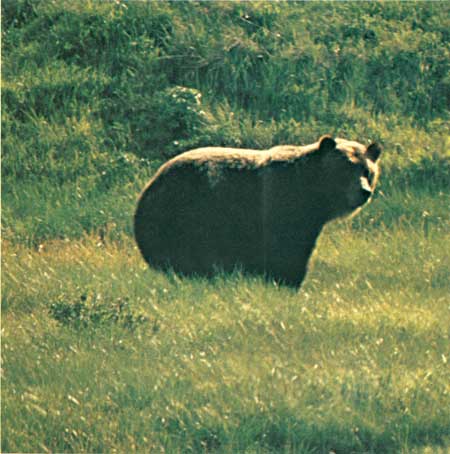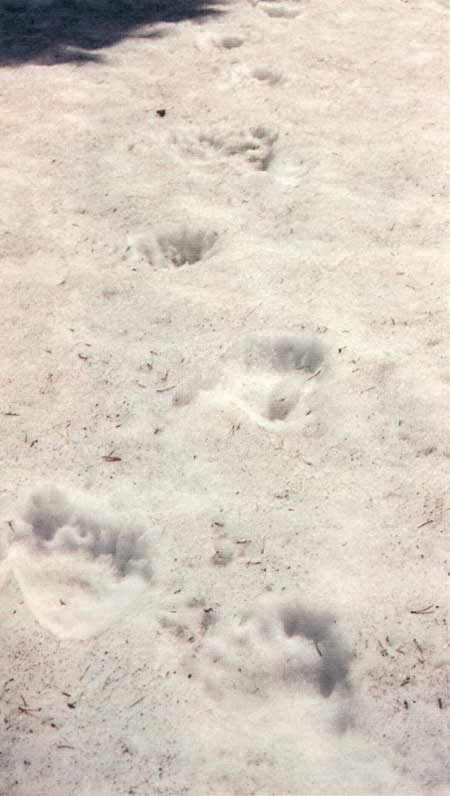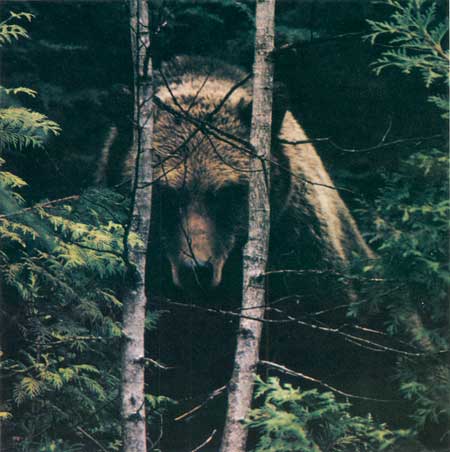|
GLACIER National Park |
 |
|
Ursus arctos horribilus: The Vulnerable King At the apex of the food pyramid, this great beast is unquestionably the king of Glacier's biotic community. Yet the long-range future of the grizzly bear is uncertain. With the grizzly exterminated from most of its former range—which once extended into the midcontinent and south into Mexico—its numbers have dwindled in proportion to its diminished range. Present concentrations in the contiguous United States remain in and around Yellowstone and Glacier National Parks. Probably fewer than 200 of these magnificent creatures live in Glacier National Park. Grizzlies are easily distinguished from the more common black bear. In addition to larger size and heavier build grizzlies have a characteristic shoulder hump; long, conspicuous claws; and a broad, concave face that gives them a "dished-in" appearance. Fur is usually brown; like the fur of the black bear, however, color may range from black to yellowish. Light tipped hairs make the fur appear frosted, giving rise to the nickname, "silvertip." Grizzlies, popularly considered arch predators, are more accurately described as omnivores. Carrion, grasses, cow parsnip, and several species of berries, bulbs, and tubers make up a grizzly's diet, along with insects, small mammals, and an occasional ungulate that it can catch. As a result, grizzlies play several roles in the biotic community, functioning as herbivore, scavenger, and predator. Ranging widely in all life zones, grizzlies follow the spring snowmelt up to the alpine meadows, returning to lower elevations to hibernate from November until April. One to three cubs are born in midwinter during hibernation. Since the maternal bond lasts two years, a sow will accept a mate only every other year. Mortality of subadults is high, resulting principally from competition among the bears themselves. As with most animals, range—habitat—appears to be the limiting factor of grizzly populations. The grizzly is normally shy and fearful of man—but highly unpredictable. Wounded or sick bears, sows defending cubs, young adults, and bears that have become conditioned to human scent are the most dangerous. As humans continue to encroach on grizzly territory, odds of confrontation also increase. Recent fatalities and personal injuries inflicted by grizzlies pose a vexing problem to the National Park Service, which is charged with visitor safety on the one hand and protection of the park's remaining grizzly population on the other. Continuing study of grizzly ecology and increasingly enlightened bear management programs will, it is hoped, allow man and bear to co-exist in a wilderness both require.  Grizzlies are fond of succulent spring grasses.  Traversing all life zones in the park, the grizzly is a true opportunist, eating anything from ants and berries to wapiti.  Seldom will a grizzly exceed 225 kilograms in Glacier. This is a young adult. |

|

|
| NPS History | History & Culture | National Park Service | Contact |
|
Last Modified: Sat, Nov 4 2006 10:00:00 pm PST |


